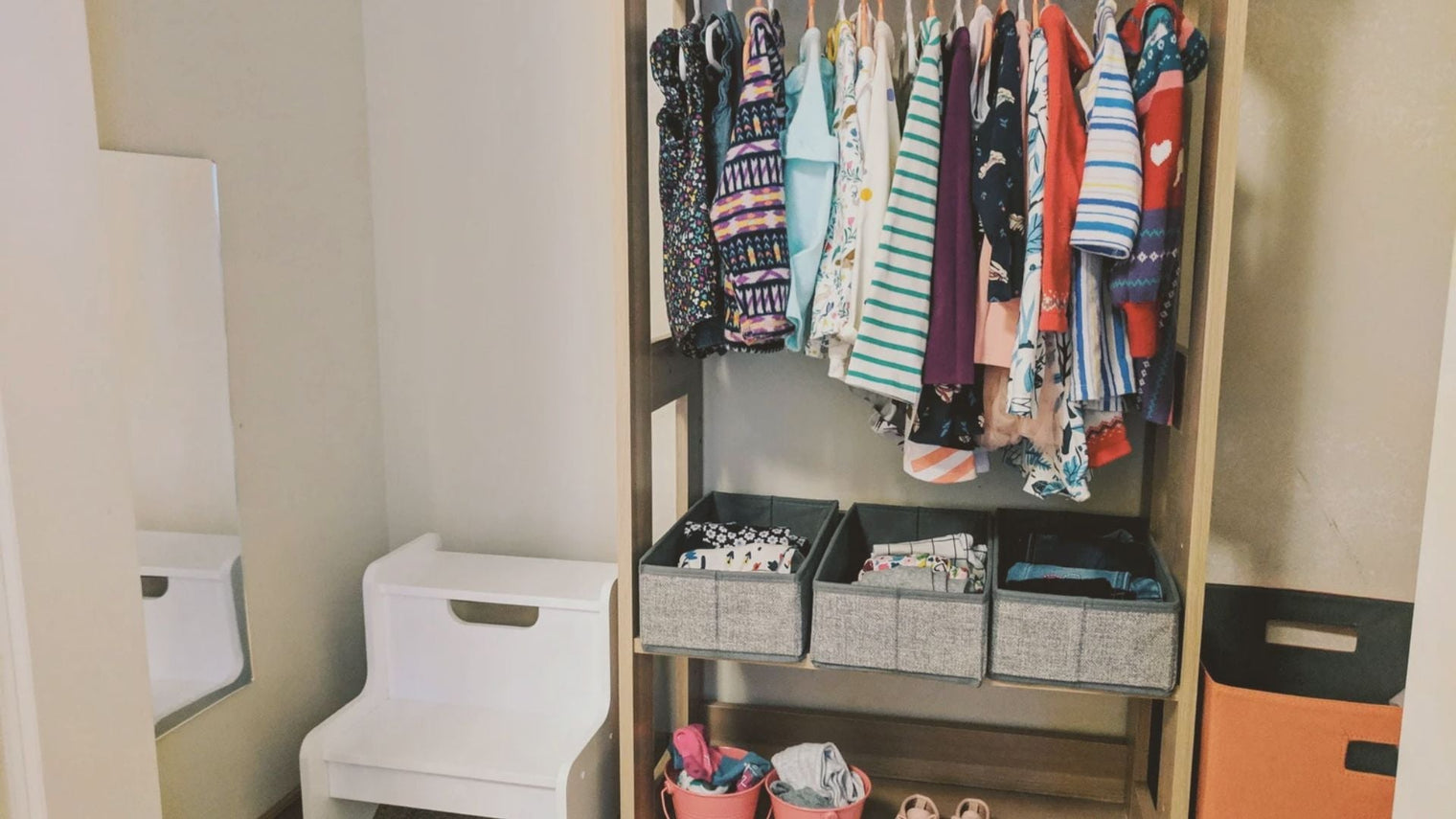Every parent wants to see their child grow with confidence, curiosity, and independence.
One of the simplest yet most powerful ways to support this journey is by creating an environment designed for children—not just adults. That’s where the Montessori wardrobe comes in.
Unlike traditional closets that require adult help to reach clothing, a Montessori wardrobe is intentionally crafted at a child’s level. It empowers children to take charge of their own routines, from choosing what to wear to putting clothes away.
This isn’t just about storage—it’s about fostering life skills, decision-making, and self-confidence.
At Dannico Woodworks, we’ve seen firsthand how thoughtfully designed furniture can transform a child’s daily experience.
By combining durable craftsmanship with Montessori-inspired design, we help parents provide their kids with safe, functional spaces that encourage independence.
What Is a Montessori Wardrobe?
A Montessori wardrobe is a child-sized piece of furniture designed to give kids access to their own clothes and belongings. It typically features:
-
Low hanging rods for easy access to shirts, dresses, and jackets.
-
Open shelves for folded clothes, shoes, or baskets.
-
Accessible drawers that children can open and close safely.
-
Open design so kids can clearly see their options without needing to ask for help.
This concept aligns with the Montessori philosophy, which emphasizes independence and hands-on learning. The wardrobe isn’t just about clothing—it’s a tool for nurturing responsibility, organization, and confidence.
Why the Montessori Wardrobe Matters Today
Children today are surrounded by countless opportunities to learn, but much of their environment is still designed for adults. Closets are too high, drawers are too heavy, and wardrobes are often cluttered.
By introducing a Montessori wardrobe into your child’s space, you:
-
Encourage independence – Your child learns how to dress themselves and manage their belongings.
-
Build decision-making skills – Choosing an outfit each day fosters confidence and autonomy.
-
Promote responsibility – Children feel pride in caring for their own clothes and keeping their space tidy.
-
Simplify routines – Mornings become less stressful when kids know where everything is and can access it without help.
-
Support confidence – Even small successes, like picking socks or hanging up a jacket, reinforce self-esteem.
These benefits make the Montessori wardrobe more than just furniture—it’s a tool for growth.
Key Features of a Well-Designed Montessori Wardrobe
At Dannico Woodworks, we believe children deserve furniture that is both practical and beautiful. Here are the essentials of a Montessori wardrobe:
1. Child-Sized Dimensions
A wardrobe designed for children ensures everything is within their reach. Hanging rods are set low, and shelves are open and accessible.
2. Durable Materials
Children’s furniture should last through years of use. That’s why we build wardrobes from high-quality, solid wood—strong enough to withstand daily interaction while staying safe.
3. Safety First
Rounded edges, non-toxic finishes, and stable structures are a must. Parents can relax knowing their child’s environment is safe.
4. Open & Simple Design
Clutter overwhelms kids. A simple, open layout helps them clearly see their choices and learn how to organize.
5. Flexibility to Grow With Your Child
Adjustable shelves and rods mean the wardrobe can adapt as your child grows, making it a long-lasting investment.
How a Montessori Wardrobe Supports Child Development
The benefits go far beyond storage. A Montessori wardrobe actively supports critical aspects of early childhood development:
-
Fine motor skills – Handling hangers, opening drawers, and folding clothes build dexterity.
-
Executive functioning – Choosing outfits strengthens planning and problem-solving skills.
-
Emotional growth – Independent dressing fosters pride and reduces frustration.
-
Practical life skills – Children learn responsibility and routine, which carry into school and beyond.
What may seem like small daily tasks are actually building blocks for lifelong confidence and independence.
Setting Up a Montessori Wardrobe at Home
Creating a functional Montessori wardrobe space is simple with a few intentional steps:
-
Declutter – Keep only seasonally appropriate clothing within reach. Store extras elsewhere to avoid overwhelming choices.
-
Organize by Category – Use baskets or shelves for socks, underwear, and shoes. Keep like items together.
-
Limit Options – Instead of offering every shirt your child owns, display a few choices to simplify decisions.
-
Model and Teach – Show your child how to hang clothes, fold shirts, and place items in baskets.
-
Celebrate Efforts – Encourage and acknowledge their independence, even if outfits aren’t perfectly matched.
By combining structure with freedom, you set the stage for success.
Why Choose Dannico Woodworks?
At Dannico Woodworks, we design wardrobes and children’s furniture with one goal in mind: to empower independence while ensuring safety and style.
As a father of two, I understand the challenges parents face in finding high-quality, functional kids’ furniture. That’s why every piece we create is:
-
Handcrafted with care from durable, sustainable wood.
-
Designed with child development in mind, following Montessori principles.
-
Safe and reliable, with non-toxic finishes and sturdy builds.
-
Timeless in design, so they complement any room and grow with your child.
We’re more than a furniture brand—we’re partners in creating nurturing environments where children thrive.
FAQs
At what age should I introduce a Montessori wardrobe?
Most families introduce one around 18 months to 2 years, when children begin showing interest in dressing themselves.
What if my child makes “mismatched” clothing choices?
That’s part of the learning process! Allowing them to experiment builds decision-making skills and confidence.
Do Montessori wardrobes take up a lot of space?
Not necessarily. Many are compact, open designs that fit seamlessly into a child’s bedroom or playroom.
Can I make my own Montessori wardrobe?
Some families DIY, but safety and durability are essential. At Dannico Woodworks, we ensure every wardrobe is professionally built with those priorities in mind.
How do I keep the wardrobe organized?
Rotate clothing seasonally, use baskets for smaller items, and involve your child in tidying up—it becomes part of the learning experience.
Final Thoughts
The Montessori wardrobe is more than just a piece of furniture—it’s a daily opportunity for children to grow in independence, confidence, and responsibility.
By creating a space that meets their needs, you give your child the tools to thrive, one small decision at a time.
At Dannico Woodworks, we’re proud to craft wardrobes that don’t just hold clothes but help shape the way children see themselves and their abilities.
So, here’s the question: What would it mean for your child to start each day with the confidence to choose and care for their own belongings?

